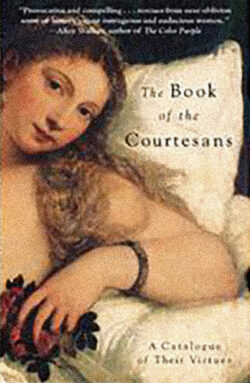The Book of the Courtesans, A Catalogue of Their Virtues gives us a radically new interpretation of an erotic tradition which was practiced from antiquity to the early twentieth century throughout Europe and eventually America. Though Turkish harems, Japanese geisha and Chinese courtesans are well known in the West, Europe’s courtesans have been ignored. Elegantly written in a witty style that mirrors the subject, this book adds a new dimension to our shared understanding not only of sexuality and women’s history but of the evolution of Western art and literature, the effects of beauty, the meaning of seduction and the mysteries of the erotic energy at the heart of both charm and power. The tradition began in ancient Greece, in a time when sexuality and spirituality were not divided and where many courtesans were also priestesses of Aphrodite. From this time until the first decades of the 20th century, courtesans were kept by wealthy and powerful men, including kings and emperors, princes, aristocrats, entrepreneurs, statesmen, artists and writers. Often born to poverty, these women rose to unimaginable heights, gaining great personal wealth and fame. Unlike most upper class women, courtesans were allowed to mingle freely with men, attend salons, frequent cafes and artist’s studios, speak openly about forbidden subjects and hence were privy to an education rare for their gender. Many became accomplished as poets, novelists, philosophers, wits, painters. Yet, as The Book of the Courtesans reveals, being a courtesan was an achievement in its own right.
